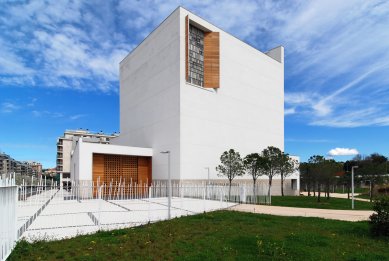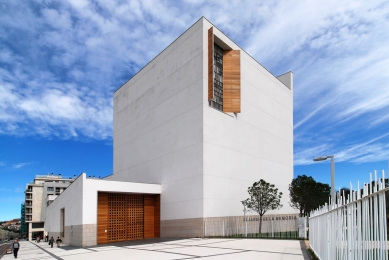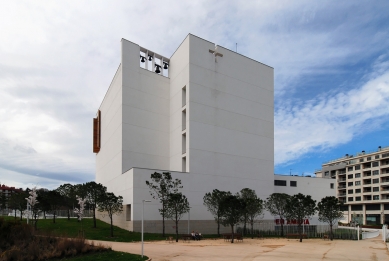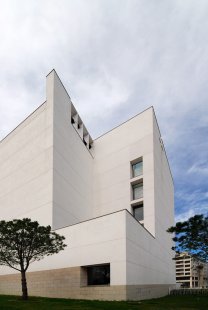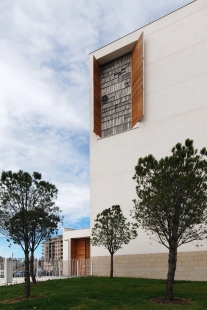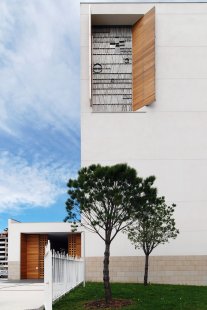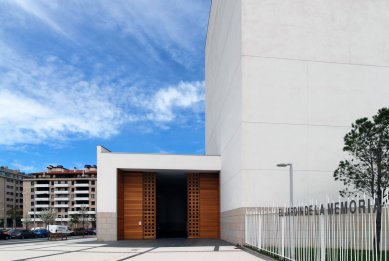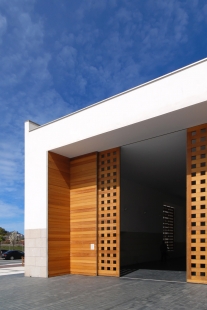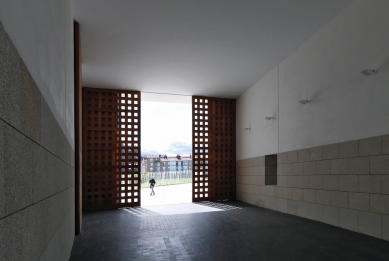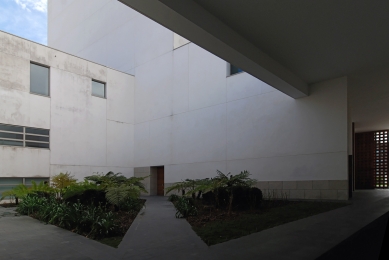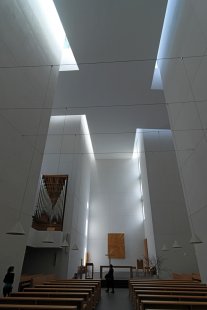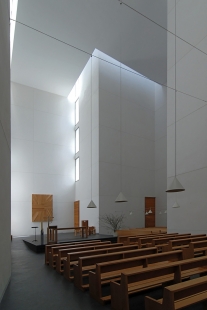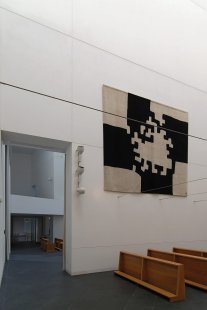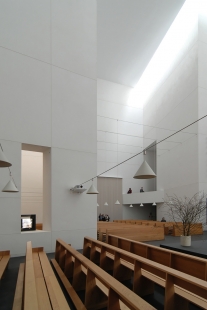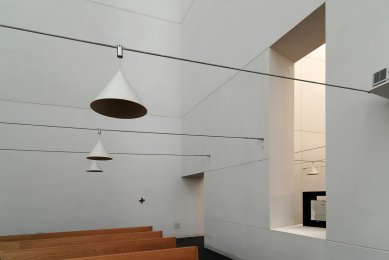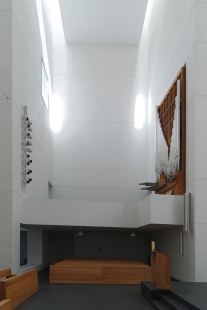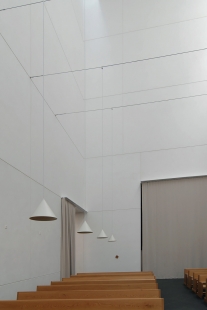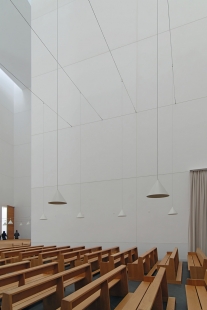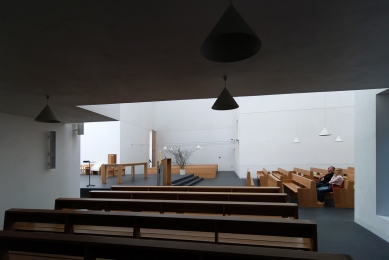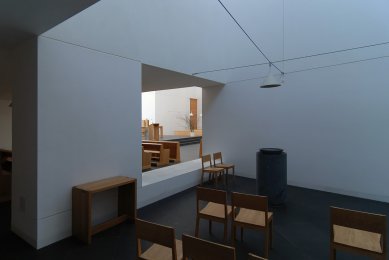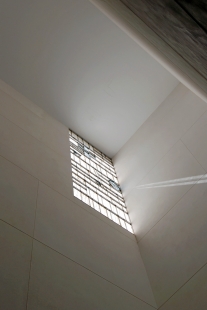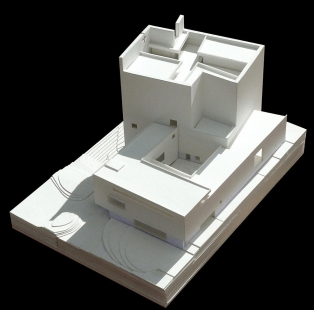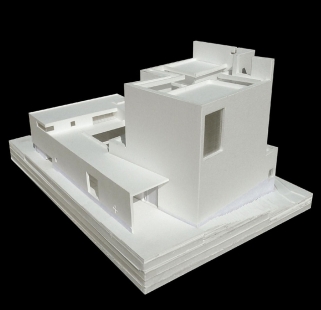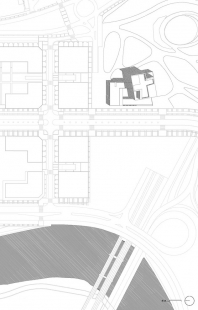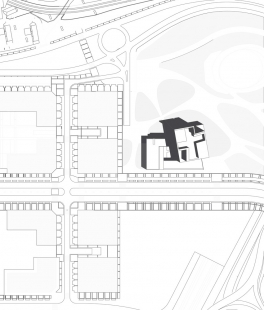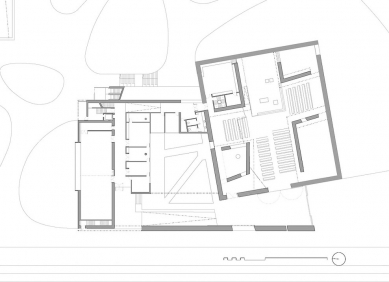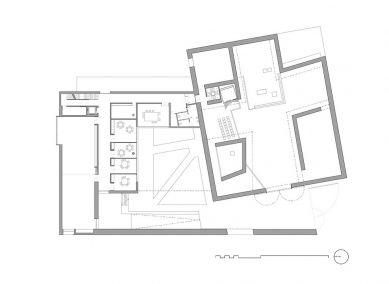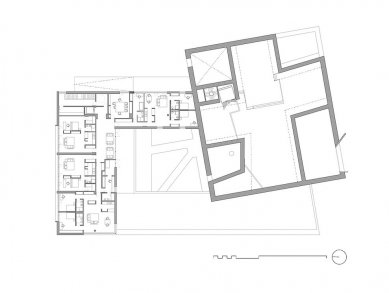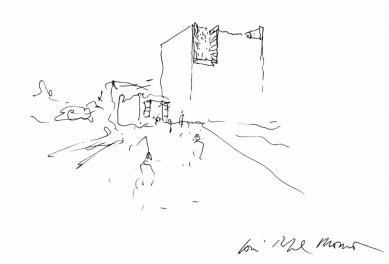
The parish church in San Sebastian
Church of the neighborhood of Riberas de Loiola

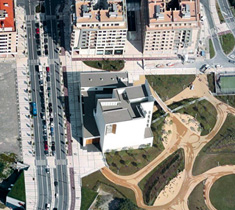 |
In his text, Moneo describes the shift from the medieval concept of the church as a 'Divine House' to an increasingly strong emphasis on the individual and the private sphere, a trend that has accelerated in recent decades. According to him, architects when tasked with building a church or temple cannot rely on a vision, but instead must risk offering their own version of sacred space. In his design, Moneo drew inspiration from the local priest Jesus Maria Zabaleta. He and his clergy wanted a church that would provide believers with a space where they could express their pious feelings without the architect's intention 'interfering' with them. The cleaner the forms and the less traditional iconography, the better, and Moneo gladly fulfilled this wish. The mass of the church appears somewhat mysterious from the outside.
The white complex rises from a massive stone base. The thirty-meter tall white concrete walls of the church rotate ten degrees from the parish towards the park. The white cement plaster is intended to better protect the building from emissions. Access to the complex is through wrought-iron gates made of solid oak. Rooms for meetings, parish offices, and apartments on the upper floor are directed towards the paradise courtyard. The reduced access to the church, on the other hand, enhances the impressiveness and effect of the main space based on an irregular Greek cross. The corners house the sacristy and chapels. The main cross-shaped space is flooded with natural light from upper skylights, which simultaneously separate the central area from the corners in the ceiling. The irregularity of the floor plan gives each of the chapels its specificity: one rises 23 meters above the low sacristy, another rises 7, 11, and 27 meters above the basalt floor. In designing the organ, Moneo was inspired by the engravings of the world-renowned sculptor Eduardo Chillida, who spent most of his life in San Sebastián. Additionally, the influence of another Basque sculptor Jorge Oteiza can be traced in the interior design, as well as contemporary artists Javier Alkain, Prudencio Irazabal, and José Ramón Anda in the interior furnishings.
After the Cathedral of Our Lady of the Angels in Los Angeles, this is only the second church designed by Rafael Moneo.
The English translation is powered by AI tool. Switch to Czech to view the original text source.
0 comments
add comment




